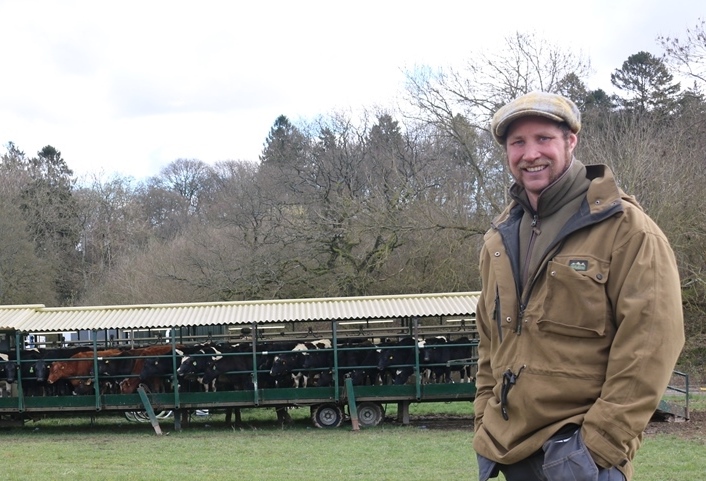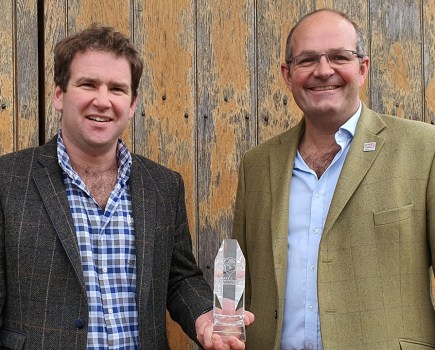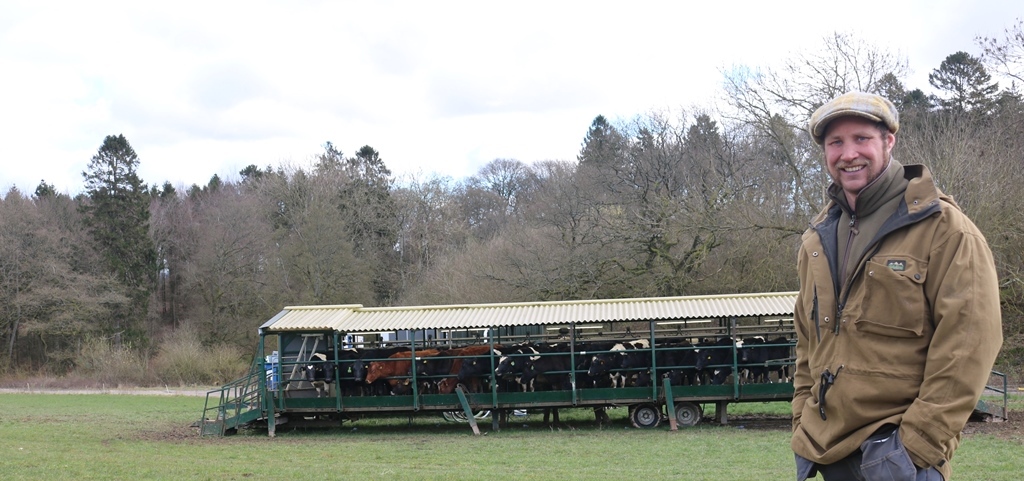
A Hampshire estate is finding there are no limits to the sustainable growth that can be achieved through a partnership approach to stacking complementary enterprises. CPM visits to find out.
We’re exploring how many enterprises we can support in the rotation that not only make money but also build soil health.
By Tom Allen-Stevens
Overlooking the main farmyard at the Kingsclere Estate is a hillside field of temporary grass that has circles of bare soil spaced out evenly towards its summit. “That’s our variable-rate fertiliser application,” explains Tim May, who runs the farming business over the 1000ha family-owned Hampshire estate.
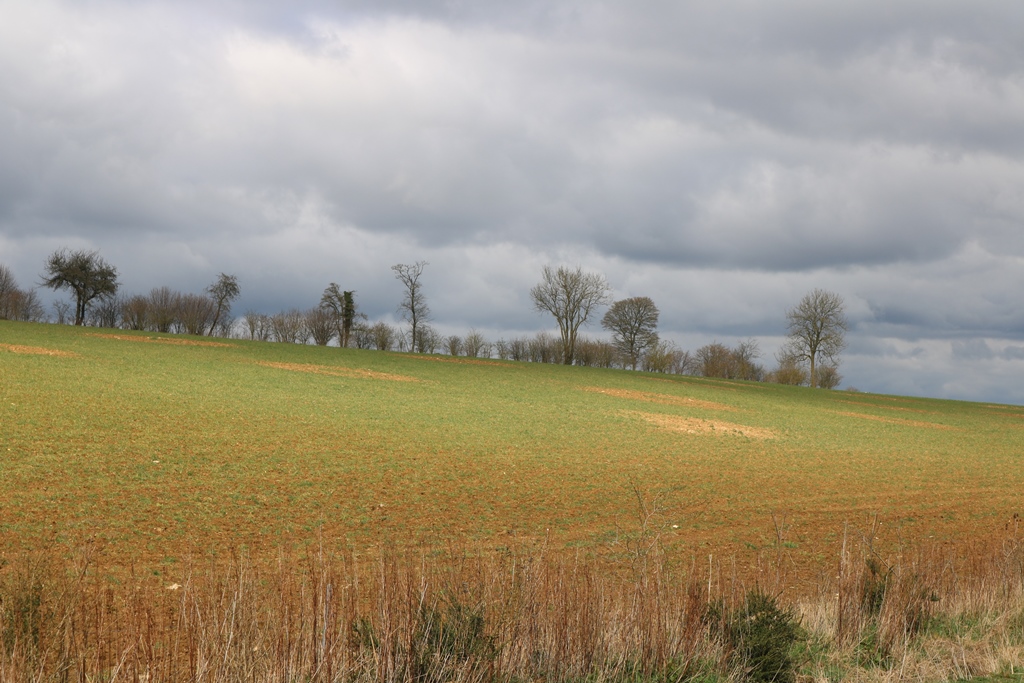
When the cattle move up the hill to graze the silage bales, they also move the nutrients and the goodness uphill to the poorer soil.
“We have soil of varying thickness over chalk with clay caps and a high flint content. So we grow fodder beet on the more fertile land of the valley bottom and place the round silage bales towards the top of the hill on the poorer soil. The cattle graze the fodder beet then move up to the silage, which also moves the nutrients and the goodness uphill.”
The land is in the process of organic conversion, farmed in eight blocks, five of which are now fully organic. This means much of the farm is cropped to fertility-building grass leys in front of cash crops which include quinoa, linseed, spring wheat and oats.
But Tim’s taken a novel approach to how these are grazed – rather than managing his own livestock or simply letting out the fields, he’s set up a partnership system. This sees him teaming up with other enterprising farmers who want to do something a little more imaginative with the land.
“I did a Nuffield Scholarship in 2011. At the time, the estate was all arable and I was struggling to see how we were going to improve the land and farm the estate sustainably. It needed more than a few tweaks and I couldn’t see that there were any farm managers out there who’d help bring the transformation I was looking for.”
Much of his inspiration came from Polyface Farms, a regenerative agriculture business in Virginia, USA, run by the Salatin family, that Tim visited during his Nuffield travels. “They have this holistic management system where waste streams of one enterprise feed the next. It’s run on a partnership system in which like-minded farmers are invited to bring their own ideas to create imaginative enterprises.
“It’s a move away from the reductionist arable mindset, of incremental gain through cutting costs, towards an abundance mindset, where you realise the true potential of the resources at your disposal,” says Tim.
The first partnership arrangement was with sheep-grazing, which also heralded the first livestock to come to the farm since it went all-arable a decade earlier. “But share farming doesn’t work quite so well with sheep. You have to look hard for the right person and business idea if you’re going to expose yourself to risk. We also wanted to move towards mob-grazing, that doesn’t work so well with sheep.”
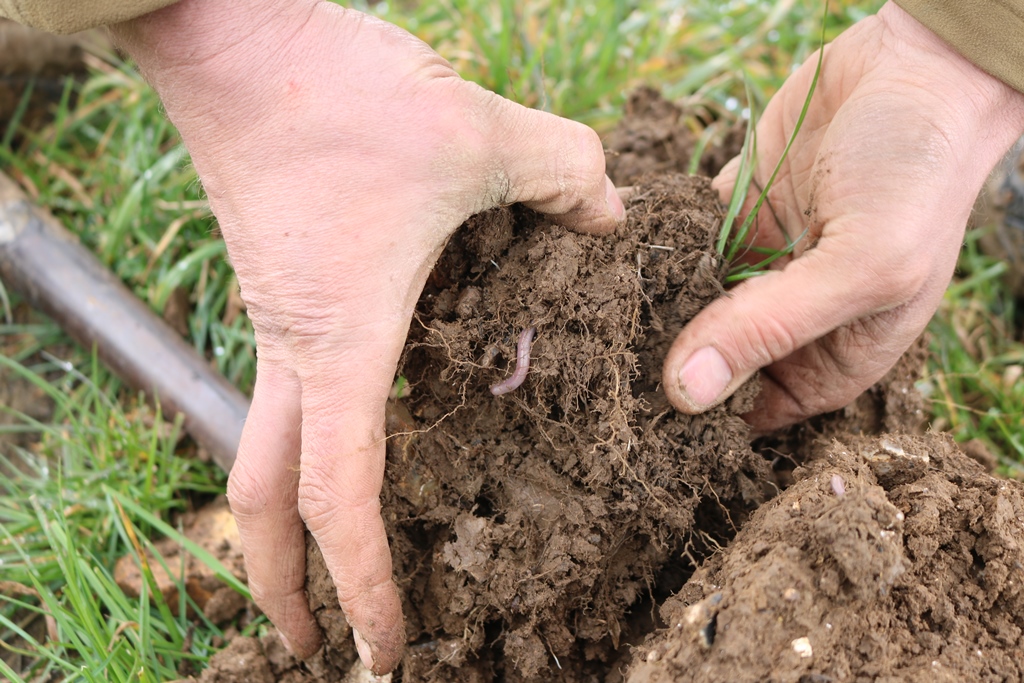
The carbon and microbial activity are built in through the herbal leys.
So he put an advert in the farming press and it was Oliver Chedgey who came forward, who had experience in beef and sheep. “We had a look around and decided milk was the way to go. Ollie knew of a mobile dairy in Dorset, so we put together a business plan.”
The 480-cow enterprise is now in its fourth calving. The hardy Jersey/British Friesian crosses stay out all winter and move onto fresh pasture each day. Tim provides the land and grazing and owns a share of the herd while Ollie provides the mobile parlour itself – 20 berths each side milking 115/hr once a day.
Ollie’s capital outlay was financed through Lloyds Bank, and although there was little security for the loan, business relationship manager John Unsworth was attracted to the venture. “This is a true share-farming relationship, in which both partners are very much involved and Tim is sharing some of the risk. It’s also a sustainable farming model with a sound business plan that has soil health at its heart. In my experience, there’s a link between farming sustainably and financial sustainability.”
As well as the move into milk, the decision was taken to go organic, to maximise returns from the dairy enterprise, notes Tim. “The herbal leys were just about organic anyway. It also fits with the regenerative agriculture approach.”
He was also keen to pursue the idea of enterprise stacking, which led to a partnership with a mobile, pasture-based chicken enterprise. “There’s no doubt the mob-grazing benefits the soil, and you get all the advantages of the muck without any of the costs of handling slurry. Introducing the chickens has the added benefit that they distribute the muck around the pasture. Time it right and the chickens feed on the larvae in the muck before these pupate and fly away, which makes a valuable protein source.
“So we’ve moved away from the limitations of thinking this an arable farm, not suitable for anything else. We’re exploring how many enterprises we can support in the rotation that not only make money but also build soil health,” Tim points out.
There’s also been a switch in mindset on the cultivations. “The farm bought its first no-till drill in 1996 and for the decade it was all-arable, there was no ploughing. But now we’re reviving our relationship with the plough,” he explains.
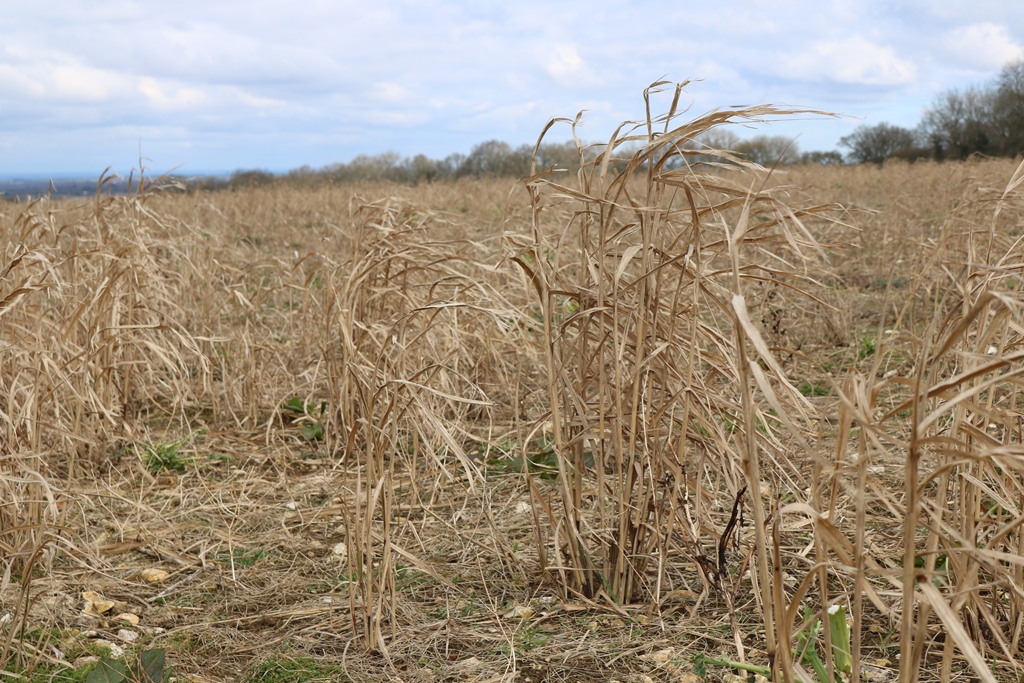
A 30ha crop of miscanthus was established last year on clay soil that has proven very hard to make into a consistently good seedbed.
“It’s needed to lift surface compaction coming out of herbal leys and helps weed control. The carbon we build in and microbial activity we feed through the herbal leys, livestock and cover crops more than compensate for any upset to soil health the plough may cause. What’s more, as we’re not using chemicals, we’re not harming the soil biology. When you’ve built up a healthy, active soil, I believe some level of disturbance can actually be beneficial,” he adds.
That said, cover crops and herbal leys are undersown into the preceding standing crop using a 6m Einböck Chopstar-Seeder, modified with low disturbance Metcalfe points that doubles up as an inter-row hoe. A 12m Einböck tined weeder is fitted with a pneumatic seeder to distribute small-seed crops into established cereals.
“We like to keep the arable cropping flexible, so if conditions aren’t right in spring, for example, we might keep a cover crop in and use it for grazing,” says Tim. “This year we’re going to try intercropping spring wheat with linseed. We may not manage to separate all of the linseed out of the wheat, but then the chickens will enjoy the mixture.”
Eggs are sold direct to the consumer through a vending machine, and here the farm takes advantage of another resource – the community on its doorstep. The A339 main road passes through the estate bringing 17,500 cars per day right past the farmyard, and along 1.5 miles of frontage onto the estate.
“We took the step a few years ago to survey the local community to find out what they really wanted from the estate. The feedback we had was very positive and overwhelmingly people wanted access to the woodland. We didn’t want to offer this for free, so figured there must be a business opportunity in it.”
Tim opens the door on the meeting room in the farm office, and there in the middle of the table is a large coffin-shaped wicker basket. “We’ve started a green burial ground. This will be for one of our ‘guests’,” he explains.
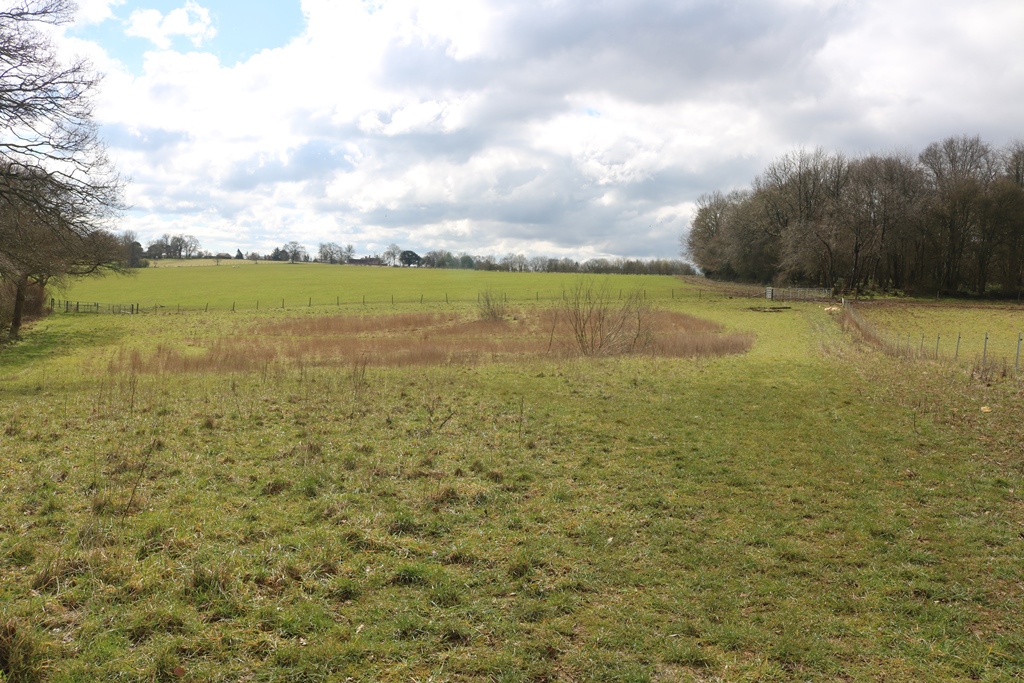
Ibworth Woodlands burial ground has received the first of its guests.
Ibworth Woodlands burial ground is a 0.8ha plot specially chosen for its tranquillity and views over the Hampshire Downs. “You buy a plot and then once a year there’s a planting weekend where the families of our guests get together and each plant a tree for their loved ones. They get to visit the burial ground and enjoy the woodland walk we’ve created, that’s also available for anyone to enjoy.
“We’re engaging the community and establishing a new area of woodland, funded through a venture that pays far more than a woodland grant,” he notes.
“I think there’s also scope for a farm shop – not something I’d like to run myself, but I’d be keen to find a partner who’d like the opportunity. With the right people who have the right mindset, there’s no limit to the enterprises we could introduce across the estate – we’re open to approaches and very keen to build on this abundance mentality.”
- For more, go to https://www.kingsclere-estates.co.uk
What makes Tim May a Climate Change Champion?
Innovative ideas
At the heart of Kingsclere Estates lies an abundance mindset. Tim enables a sustainable growth and progression through a partnership approach, tailoring business plans to the individuals he shares the ventures with.
Productivity push
Enterprise stacking across the estate allows the waste stream of one farming activity to feed another. This ensures the livestock enterprises fully complement arable crops, building soil health and growing the business without depleting resources.
Cultivation care
Mob-grazing, cover and companion crops and undersowing to ensure continuous crop cover deliver an active and thriving soil biology. This allows judicious use of the plough to alleviate compaction.
Bio-based boldness
Identifying a local need for woodland, Tim has turned this into a sustainable business venture through the green burial ground. Where woodland is replanted, trees are chosen that form the foundation of a forest garden. The miscanthus utilises and improves poor soil while providing a source of green energy.
Partnership route to sustainable growth
The partnerships Tim has created through Kingsclere Estates are good examples of ventures Lloyds Bank supports through its Clean Growth Financing Initiative, says John Unsworth.
“We’re aiming to encourage projects that are more environmentally friendly. The benefit for the farm business is that we make the loan available with no arrangement fee, which is usually 1.5% of the sum borrowed,” he says.
The sort of projects that qualify would have at least one of the following elements:
- Reduction in carbon and greenhouse gas emissions for core business processes, properties and infrastructure.
- Energy efficiency, renewables, environmental sustainability improvements or production of related products.
- Investment in low carbon vehicles and transport.
- Investment to improve water efficiency.
- Investment to reduce waste or improve recycling rate.
“Tim has an open-minded attitude towards optimising the estate’s resources. He also aims to integrate the various enterprises, so that the waste stream of one farm activity becomes the raw material for another. That’s particularly the case with the chickens which benefit from a protein-rich diet because they rotate around the farm following the dairy.
“This integrated story is one that the general public can latch onto, and that Tim builds into a business benefit to ensure sustainable growth for the estate, which makes him a worthy Climate Change Champion.”
Climate Change Champions
UK Farming has set itself the challenging target of Net Zero emissions by 2040. Although led by the NFU, it will take the entire industry, working together in a partnership approach to meet this ambitious goal.
But there are individual growers, thought leaders who have already started on this journey. They have the ideas, the progressive outlook and the determination to shape positive change. CPM has teamed up with leading agricultural suppliers who have a credible Net Zero aspiration to identify these individuals and bring them into the top-level discussion about how farming can position itself as the solution to climate change.
CPM would like to thank our sponsors:
Agrii, BASF, BKT, CF Fertilisers, KWS, Interagro, Lloyds Bank, Small Robot Company]

